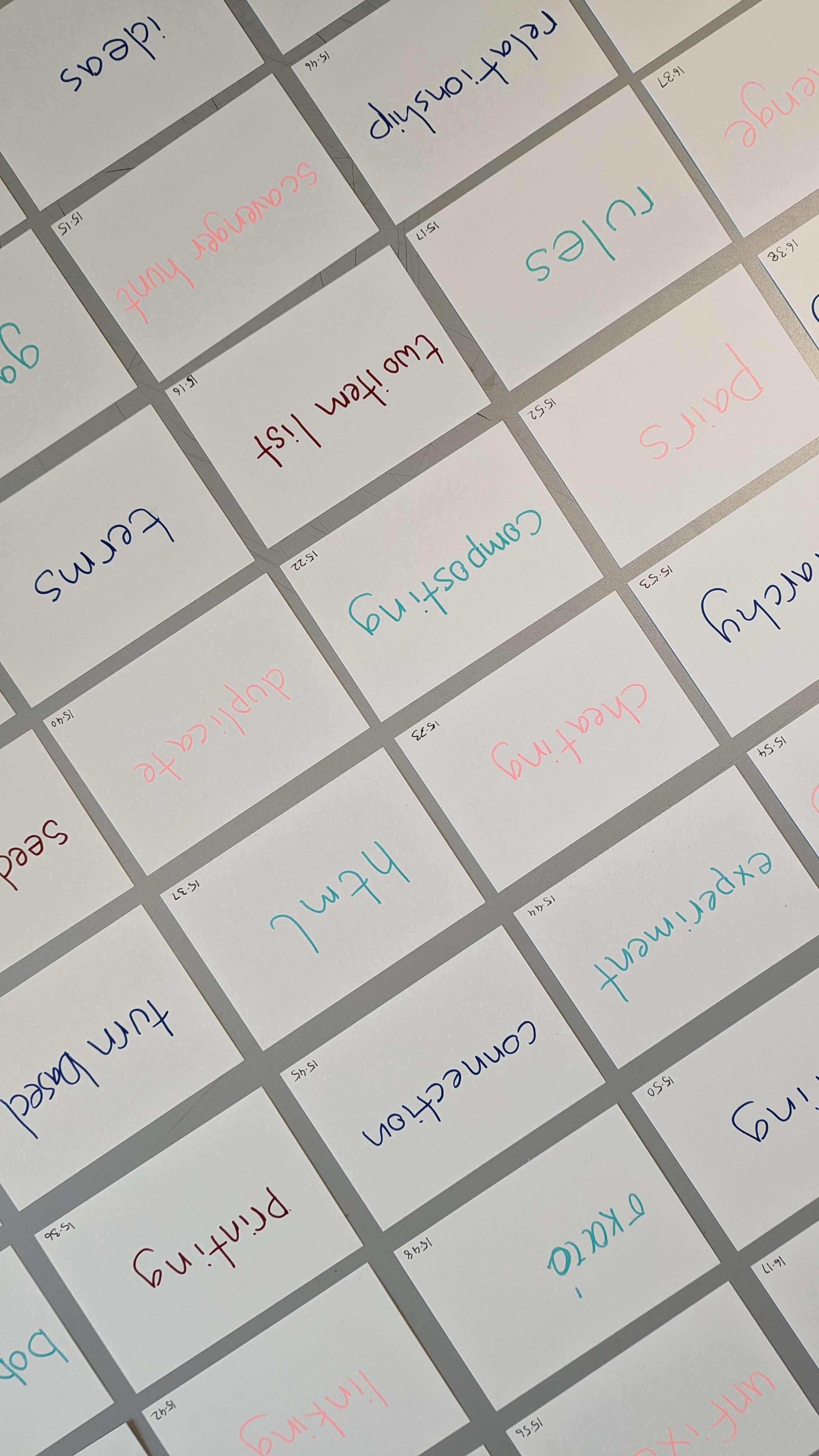
writing
The world (which some call the Library) is made up of an unknown, or perhaps unlimited, number of hexagonal galleries, each with a vast central ventilation shaft surrounded by a low railing.
From any given hexagon, the higher and lower galleries can be seen stretching away interminably. The layout of every floor is identical. Twenty-five long shelves, five on each side, fill all the sides but one; the height of the shelves, which is the height of the walls, is little more than that of the average librarian. From the unshelved side, a narrow passageway leads off to another gallery, which is identical to the first and to all the others.
To left and right of the passageway are a pair of tiny cupboards. One is used for sleeping upright; the other, for satisfying faecal necessities. From this passage a spiral stairway climbs up, or goes down, to the uttermost reaches. The passageway contains a mirror, which faithfully duplicates what appears before it. From this, most people infer that the Library is not infinite, for, if it were, why this illusion of duplication? I prefer to imagine that the mirror’s gleaming surface depicts and promises infinity. Illumination comes from spherical fruit called lamps.
There are two, opposite each other, in each hexagon. Their light is inadequate, though continuous. Like all men in the Library, in my youth I travelled, roaming in search of a book, perhaps of a catalogue of catalogues. Now, when my eyes can barely make out what I write, I am getting ready to die a league or two from the hexagon where I was born.
Once I am dead, there will be no want of pious hands to hurl me over the railing. My grave will be the bottomless air; my body will plummet for a long, long time, decaying and dissolving in the wind generated by my fall, which will be infinite. I have said that the Library is limitless. Idealists argue that hexagonal chambers are the quintessential form of absolute space or, at least, of our perception of space. A triangular or five-sided chamber, they reason, is unimaginable. (Mystics claim that their ecstasies reveal a circular chamber with a great circular book, whose continuous spine runs all the way round the walls, but the evidence of these seers is suspect and their words obscure. Such a cyclical book is God.)
For now, I need only quote the classic dictum that ‘The Library is a sphere whose exact centre is any hexagon and whose circumference is beyond reach.’ Each wall but one of each hexagon has five shelves; each shelf holds thirty-two books of a uniform size. Each book contains four hundred and ten pages; each page, forty lines; each line, eighty characters in black letter. There are also characters on the spine of each book but they give no indication or forewarning of what is inside. I know that this discrepancy was once looked on as a mystery. Before I run through the explanation (whose discovery, despite its tragic ramifications, may be the most important event in history), let me call to mind a few salient facts.
First, that the Library has always existed. Of this truth, whose direct corollary is that the world will always exist, no reasonable mind can be in doubt. Man, the imperfect librarian, may be a creation of chance or of evil lesser deities. The world, with its elegant supply of bookshelves, of baffling volumes, of inexhaustible stairways for the traveller and privies for the seated librarian, can only be the creation of a god. To appreciate the distance between the divine and the human, all we need do is compare the crude, spidery symbols my fallible hand is scrawling on the endpapers of this book with the organic letters on the inside, which are precise, fine, deep black, and perfectly symmetrical. Second, that the number of these symbols is twenty- five.* The discovery of this fact three hundred years ago led to the formulation of a general theory of the Library and to a satisfactory solution of a problem which, until then, no hypothesis had addressed - namely, the formless and random nature of almost all books.





